By Charles Kao | Founder, Artisanal Collective
For decades, we’ve heard the refrain: the private sector and the public sector must come together. Governments, businesses, philanthropies—if they collaborate, good things will happen. But how often has that worked? The truth is, apart from a few well-known cases in agriculture, public health, and infrastructure, most of these “collaborations” have been ceremonial, photo-op level, with little structural traction, no sustained training, employment, or job creation, and almost no economic durability.
Collaboration for training and empowerment? No. Because training alone doesn’t create employment or jobs. Without direct pathways to employment—without businesses co-owning the outcomes—it becomes just another workshop, another certificate. There’s only one well-known model that has consistently linked training to real employment and job creation: Germany’s dual vocational system, which is closely integrated with its private sector. Even that has failed to scale globally, not because it’s rocket science, but because the necessary trust infrastructure, co-governance mechanisms, and prestige pathways don’t exist elsewhere.
For context, the German VET frameworks now include ICT, programming, automation, and AI integration precisely because job creation has shifted toward these domains. However, for most public-private initiatives around the world, the fundamentals remain unchanged: no job creation, no meaningful empowerment. Despite decades of experimentation, most programs still fail to generate employment at scale because they lack the structural trust, co-governance mechanisms, and business ownership of outcomes that underpin Germany’s success.
Nothing is forever. A real opportunity now exists for the private, public, and philanthropic sectors to collaborate efficiently. Interestingly, it involves an ancient practice that UNESCO currently incorporates into its Social and Emotional Learning (SEL) programs, and the new AI, which, while enriching our Google search results, is also eradicating millions of global jobs for which there are no solutions to replace them.
At Artisanal Collective, we believe that the greatest untapped asset in the global economy is not oil, not data, not code. It is our human resources. Its creativity, culture, and memory of its heritage, as well as the desire for a better life, resonate globally, both north and south. To provide sustained empowerment for the poor in the Global South, one needs to offer them a rope, or even better, a ladder, to help them get out of their hole. To rope down or go down with some helpful resources is helpful, but it does not get them out of their hole.
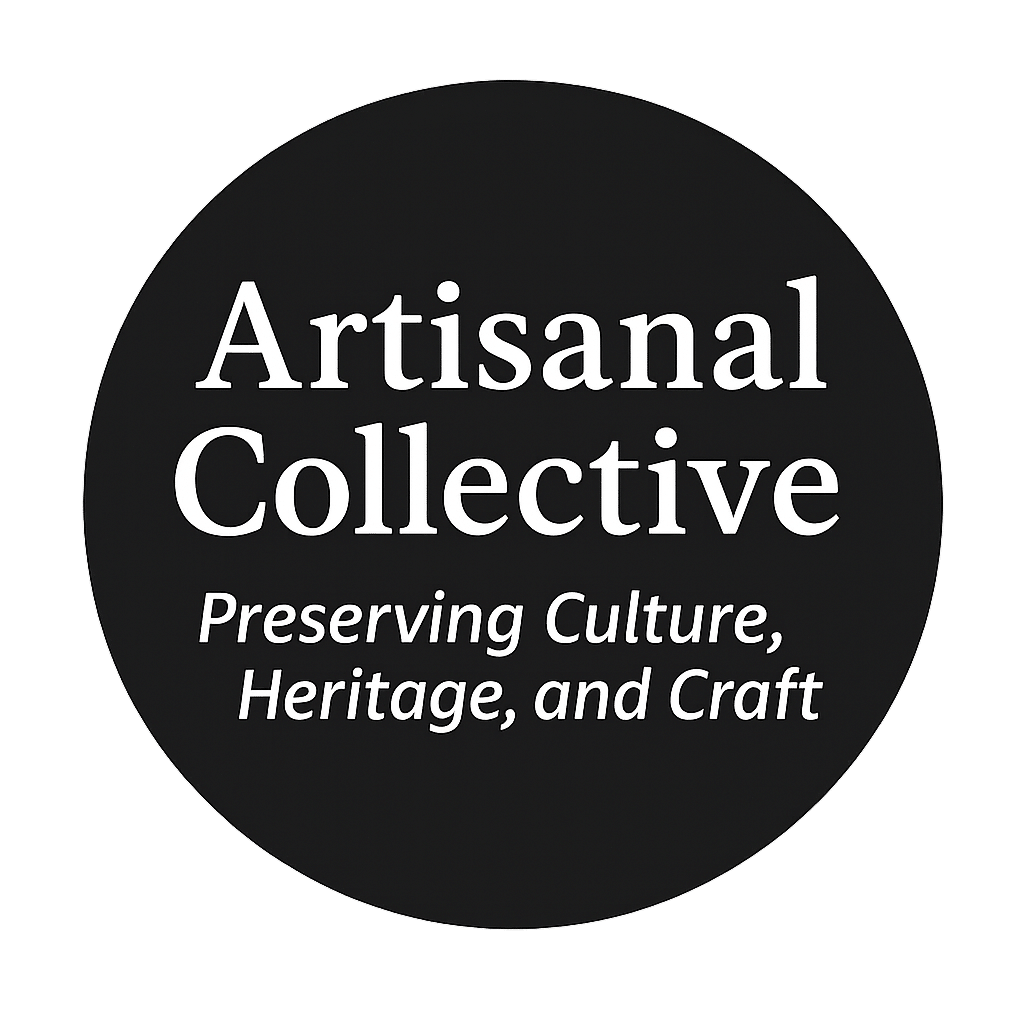
Our name signals our focus: artisans who exist in almost every community, rich or poor. What we focus on are those communities where artisanship remains informal, vulnerable, generational, and often invisible. The 300 million poor artisans cited globally—primarily women, mostly informal, based mainly in the Global South—represent a sleeping economic, creative, and cultural giant. Is the $6.5 trillion number accurate? No one knows. It’s likely inflated. Or understated. But it signals something real: this isn’t marginal. It’s mainstream. It has not been organized to ensure that poor artisans receive their fair share.
Most of these artisans live on $2–$3 a day. They lack the skill to produce for fashion weeks. They lack the capital to purchase raw materials, so they cannot list inventory on Amazon or Temu. Most of their work is brokered—if at all—by middlemen who strip out both margin and dignity. They come around the villages, drop off some raw material with a design, return to pick up the finished craft items, and drop off some sustenance. These middlemen would rather no one messes with this setup unless the new model can generate more profit for them.
That’s where Artisanal Collective’s empowerment of the poor artisans and preservation of the culture and heritage embodied in their crafts come in.

An old and Simple, Powerful Framework: Training at the Village Level, with a few twists
Our Empowerment & Training Program activates small clusters over a 3–4-year period, comprising two to three artisan communities per country, with 10–15 families per cluster, and three to four contributors per household. This yields 300–700 participants per country per wave. We provide shared workshop space, basic infrastructure (including tools, seating, and drying racks), a framework for internet access, and the custom Artisanal AI GPT, as well as human trainers and facilitators.
At the beginning of the program, the trainees are explained the objective, components, tools, and content of the program. “We will be providing you with…”:
- Hands-on and online training to elevate your design, sustainable raw material sourcing, preparation, and production skills to what their target market will buy.
- The workplace facilities, production tools, and raw materials.
- Digital package including a laptop, smartphones, connectivity, and access to the custom Artisanal GPT, which includes financial literacy, business skills, digital literacy, fundamental legal knowledge, pricing, order fulfillment, market preparation, and even guardrail alerts for overreach. The custom Artisanal GPT contains curated, verified general knowledge, as well as contributions from global and local experts in wide-ranging subject matters related to work, women, marginalized, life, etc., empowerment.
- Access to markets and customers. From Day 1, you are part of the ‘[Village Name] Production Group’. We have clients and patrons who have agreed to purchase the craft items you produce, starting from the very beginning, at a fair price. So, the ‘[Village Name] Production Group’ will be earning a steady incoming revenue year-round, while learning. The learning schedule will vary and adapt to your farming schedule (seeding, harvest, etc.).
The development institutions, government ministries, diaspora groups, and others who are funding this program want to see you succeed, not only for your benefit, but also for the benefit of your family, community, and country. They have allocated funds to ensure that during pre-harvest periods, any income shortfalls will be covered.
Once your training program has been completed, the ‘[Village Name] Production Group’, if the group wishes, will be formalized into a cooperative. In this cooperative, you will work for yourself (you are the boss) and may eventually hire employees, contractors, enter into joint ventures, make investments, and so on.
Our Future Visualization Program
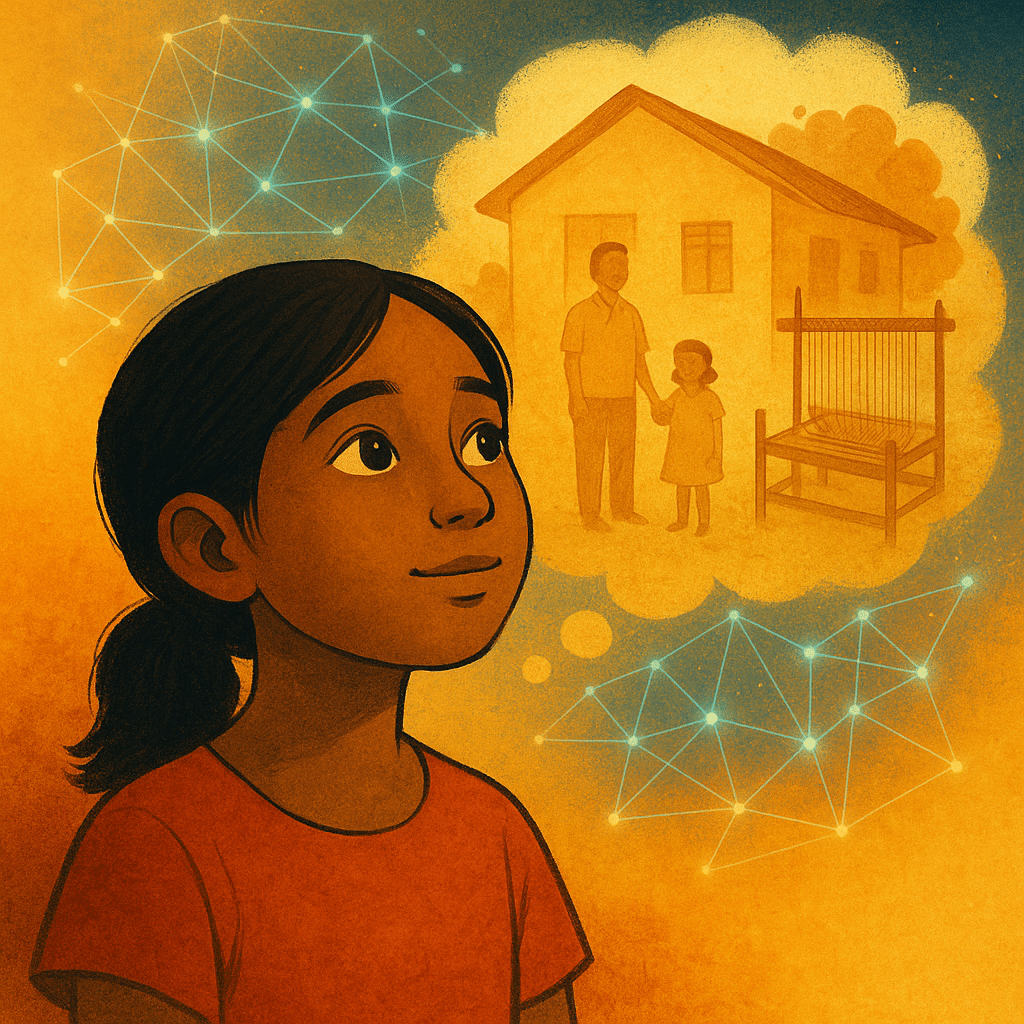
The program begins with the trainee participating in the ‘Visualize the Future’ program, privately or publicly. The Artisanal GPT takes each trainee’s verbal vision of their future, along with their image, and creates a video of their vision. Trainees are encouraged to spend two moments throughout the day visualizing or reviewing their vision, which can be updated as desired. This, or any ongoing interaction with the Artisanal GPT, may be verbal in the local language, which helps overcome challenges where some rural communities have low literacy rates, especially among women.
Over the first few months, we will share with the trainee information about the other parts of the Artisanal Collective ecosystem that they will have access to. These components are designed to protect them from themselves and others, help them succeed, maintain their success, grow it, and share it with others.
Reviving the Old with the New: Master + Apprenticeship
In parallel, we revive endangered crafts through Master Circles—one master, four apprentices. Each apprentice is trained not only in skills, but also in responsibility—to their village, to their culture, and to future apprentices. These programs are not nostalgic. They’re forward-oriented, tracked, and embedded with stories and contain similar elements to those of the rural artisans.
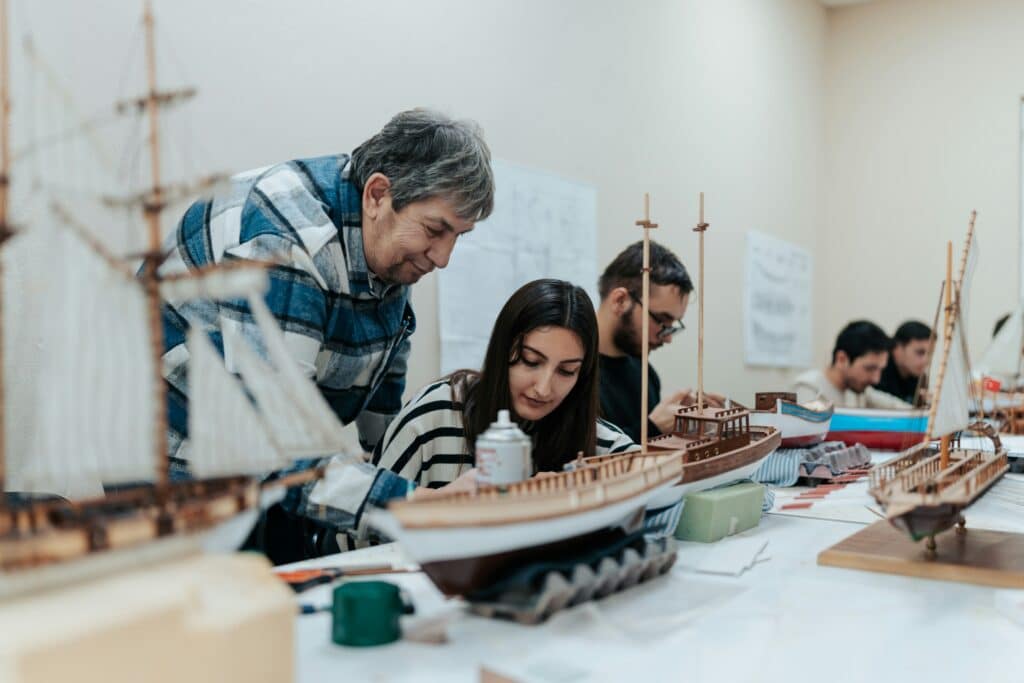
Memory, Market, Momentum: The LLM That Remembers
Most people, when they hear “AI,” think ChatGPT, Gemini, Claude, etc., known as general Large Language Models (LLMs). We think of oral traditions, heritage crafts, gestures, songs, rituals, and more. We are building the global Cultural Heritage & Craft large language model (LLM) through live interviews with hundreds of thousands of artisans, aligned with, and as part of, the general LLMs, in line with the UNESCO Intangible Cultural Heritage framework. The Cultural LLM is owned by the non-profit, Artisanal Collective, and, where possible, co-created and co-owned with individual countries.
This is important because cultural memory is our identity, and we can’t build sustainable livelihoods and economies on erased identities. Mars will wait for our race to it, but our culture and heritage won’t.
The Market Logic: Brands, Not Pity
We are not in the business of charity. We are not in the souvenir business. We build premium and luxury brands—Artisan Lorvée and Artisanal Collection—for online and retail store shopping that elevate the artisan product, process, and person. Our model generates pricing power through narrative, fosters consistency through training, and promotes retention through dignity. This is not about aid. It’s about architecture.
Storytelling
Madame Planet & the Professor is our global storytelling campaign platform co-produced with Barbara Pyle (producer of Captain Planet), that generates hundreds of millions of impressions globally every year. This multiplatform AI-produced animated series mobilizes audiences, driving culture, heritage, and artisan market visibility, engagement, and sales of artisan products through an ethical storytelling campaign. It recruits and mobilizes members for the Heritage Corps and helps to bridge diaspora communities.
Artisan-produced video snippets will be used for dignified storytelling and to connect the artisans with their products on e-commerce platforms. They also serve to counter any detractors who wish to hinder the artisans’ empowerment and right to a dignified living.
Young artisans may yet live to be proud of their craft.
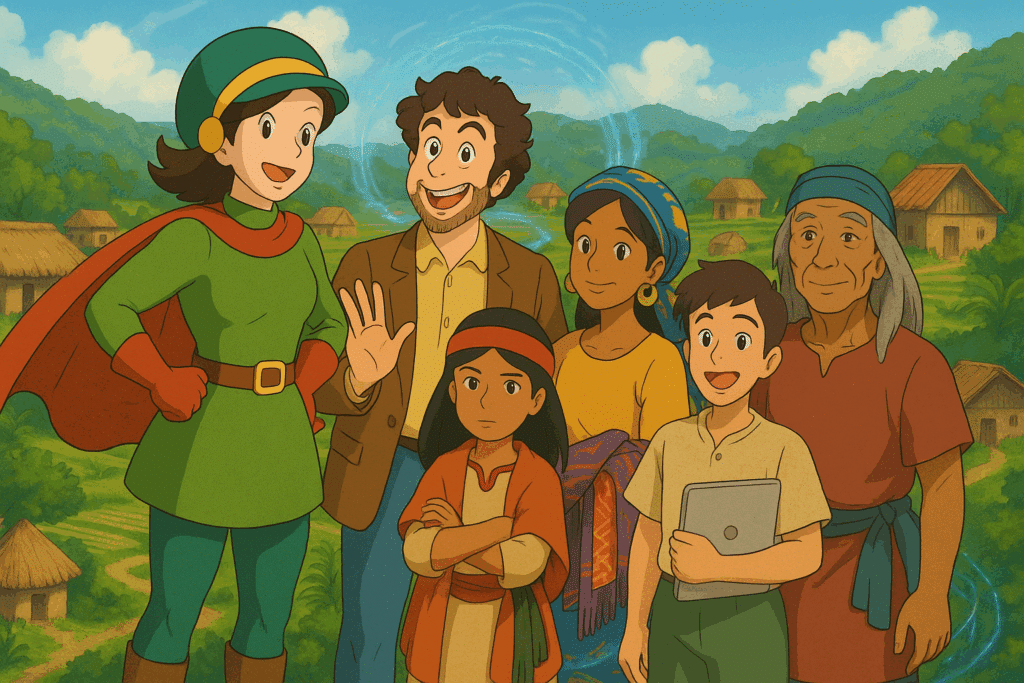
Diaspora: From Nostalgia to Infrastructure
Diaspora communities care. They send remittances. They support causes. But what if they could invest in the future of their culture, not just memory, but momentum? Through our Heritage Corps, diasporas can be the first “Adopt-a-Village” funders and patrons, become a “Big Brother or Sister” mentor and friend of artisan(s), including investment in the artisan cooperatives or their tourism infrastructure, be actively involved with the data collection for the Cultural GPT LLM, and even visit each other.
They’re not just donors. They’re co-architects.
Encounter Journeys, Tourism, and the Heritage Economy
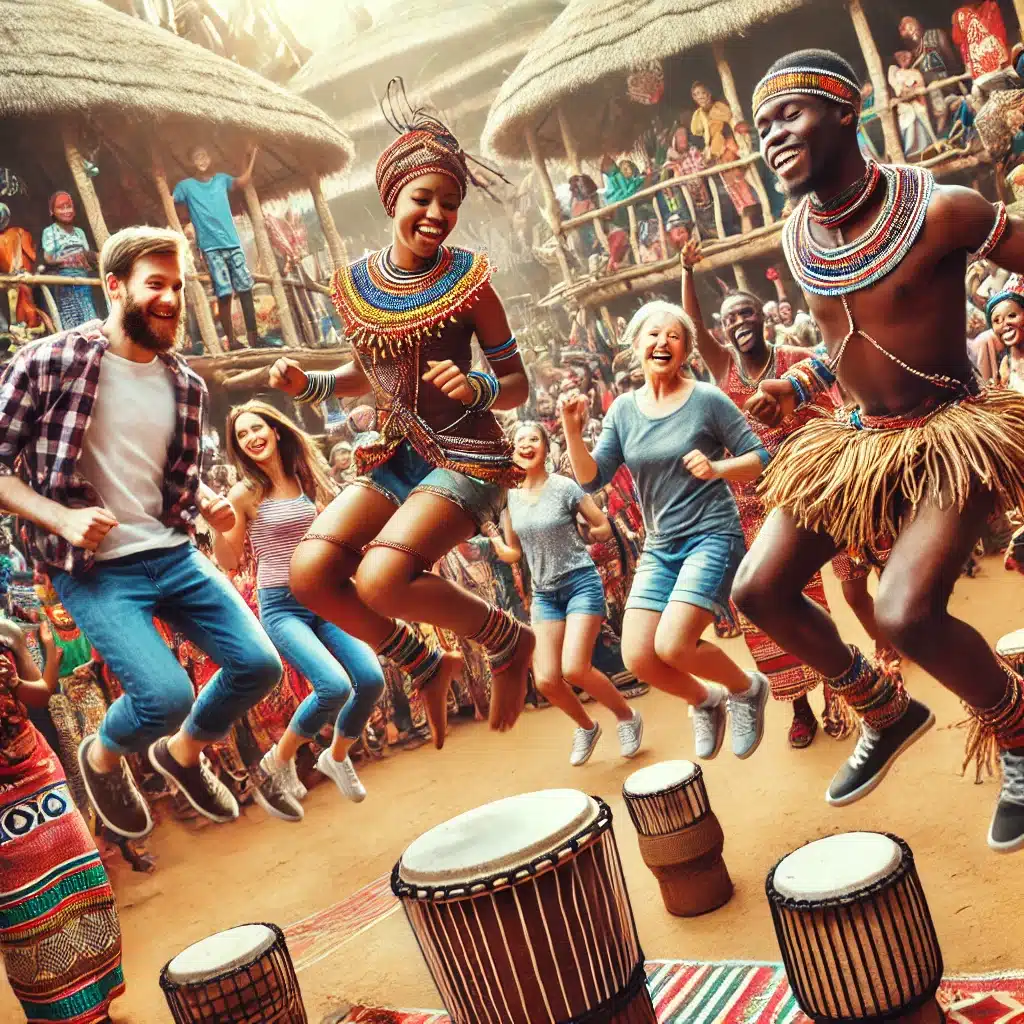
Tourism is not an afterthought. It’s a front door. Through Encounter Journeys, we connect young, old, nationals, and international travelers to village-based cultural immersion experiences: watch the art, learn the craft, experience their land, savor the food, hear the music, and connect with the artisans. We collaborate with tourism boards, private developers, and global partners, including Intrepid Travel and Elder Hostels (doing business as Rhodes Scholars).
With minimal infrastructure, in partnership with tourism boards and investment from the private sector, including diasporas, we aim to activate sustainable community-based artisan tourism in villages that are ready and desire it.
Jens Thraenhart, one of the world’s foremost cultural tourism experts, leads the Artisanal Collective’s tourism workgroups and task forces, which guide the development of community tourism initiatives. Madame Planet & the Professor are on standby for the storytelling campaign to generate bookings.
Growth & Expansion Programs
To extend field capacity, cultural participation, and market visibility, the following optional expansion programs may be integrated beginning in year 2, through joint ventures, partnerships, and sponsorship from the private sector, government, academia, museums, UN agencies, and NGOs:
Artisanal In-Residence — Exhibitions of curated artisan products and retail activations in embassies, hotels, and cultural venues (temporary or permanent).
Living Artisan Villages & Fête des Artisans — Artisans train, demonstrate their techniques, entertain, feed, sell, and celebrate their culture and heritage with national residents and international tourists.
Yearly national, regional, and global Creative Industry AwardsTM— Consumers around the world vote for their favorite artisan-crafted items, music, arts, dance, food, storytelling, etc. categories. Regional and global winners are announced in a professionally produced video, featuring interviews, demonstrations, performances, and more, with the runner-up and winners. Each is designed to accelerate systemic change in the cultural field, provide artisans market access and visibility, and facilitate growth, dignity, and joint investment with the government and private sector.
Governance, Measurement, and Long-Term Viability
Every program has milestones, measurements, and accountability. We work with Dalberg. We align with the SDGs. We contract with the best-of-the-best in training and capacity building, including Swiss Contact, Solidaridad, and other notable organizations.
Our founders include a 2025 Nobel Peace Prize nominee, the former head of UNESCO’s World Heritage and Natural Sciences Divisions, who now leads the global GeoGPT AI initiative; an international development and ESG leader; a career Specialist with IFC/World Bank; and a serial entrepreneur dedicated to sustainable innovation.
Final Word
We need infrastructure—cultural, economic, digital, and narrative—that lifts those most marginalized through the assets they already hold.
If you believe in this, join us. Visit our website (https://artisanalcollective.org/) and click Get Involved. Whether you are a student, a policymaker, associate with a development institution or UN Agency, a diaspora leader, a philanthropist, or a private sector innovator, there is a seat for you at this table.
We are not building programs. We are building futures.
And we are just getting started.
